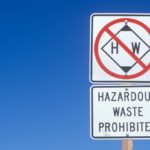
Environmental health practitioners are dedicated to protecting public health by monitoring and recommending solutions to reduce pollution levels.
They use specialized equipment to measure the levels of contaminants in air, water and soil, as well as noise and radiation levels. Some also design solutions to reduce pollutants or assist in clean-up and remediation efforts.
Environmental health practitioners can be generalists or become specialized in a specific area:
- Air quality experts work indoors, monitoring allergens, mold and toxins in the air, as well as outdoors, measuring the pollutants generated by businesses, vehicles and agricultural operations.
- Soil specialists focus on risk assessment and reclamation of land contaminated by manufacturing processes, farming, garbage and other hazardous waste.
- Hazardous and solid waste professionals look for ways to minimize waste production, safely move and dispose of waste and, when necessary, expedite clean up of spilled waste.
- Noise abatement specialists protect our quality of life and our hearing by enforcing limits on ambient noise from vehicles, airports, construction and industrial sites, music venues and even the barking dog next door.
- Radiological assessors monitor radiation levels from power plants, medical and other x-ray equipment and natural sources.
Working Conditions
Environmental health practitioners typically work a standard 37 to 40 hour week, although overtime and weekend work may be required, particularly if the environmental health practitioner assists with emergency response activities.
While much of the work is done at a desk, analyzing data and writing reports, most environmental health practitioners also spend a great deal of time in the field, inspecting sites and taking samples. The work can be fast paced, with tight deadlines and multiple pressures. It can get confrontational, as well, particularly for environmental health practitioners who work in enforcement.
They use highly sensitive, and sometimes heavy, equipment to measure contaminant levels. They may be required to wear or carry this equipment for extended periods, don protective gear and work under less-than-sanitary conditions.
Environmental health practitioners work for local, state and federal government agencies, consulting firms and industry. If they work for a regulatory agency, they can be perceived as “environmental police,” intruding on business operations, issuing citations and even forcing temporary shutdowns.
Environmental health practitioners who work as consultants may focus on a specific geographic region or business area, assessing whether certain pieces of land are safe to build houses on, for example. Consultants directly hired by companies may travel to various industrial sites to keep manufacturing operations in compliance with environmental laws.
Other environmental health practitioners serve on broad–even international–emergency planning and response teams, developing rapid-response strategies and racing to sites to speed clean-up efforts following natural and human-made disasters.
Academic Requirements
Environmental health practitioners like food safety specialists typically earn a four-year college degree with a scientific major. Some states offer certification for environmental health practitioners who have a specified amount of work experience and pass an examination.
Acquiring a degree from an accredited environmental health degree program is highly recommended for individuals interested in entering the field of environmental health.
Accreditation is important to many employers, as well, including the federal government. For example, only students from accredited programs are eligible to participate in the National Environmental Public Health Internship Program. Graduates of EHAC accredited Undergraduate Environmental Health degree programs are also immediately eligible to apply for Environmental Health Officer positions with the United States Public Health Service (USPHS). Further, EHAC accreditation assures employers that graduates have completed at least a 180 hour hands-on, practice based internship during their college career.
Accreditation is important to many employers, as well, including the federal government. For example, only students from accredited programs are eligible to participate in the U.S. Public Health Service’s Commissioned Corps Officer Student Extern Training Program. Further, EHAC accreditation assures employers that graduates have completed at least a 180 hour hands-on, practice based internship during their college career.
Experience in the food preparation industry can help you qualify for an entry-level position as a food inspector with the U.S. Department of Agriculture (USDA). USDA food safety specialists must pass a written test and have either a four-year degree or job-related experience that involves ensuring compliance with proper food safety standards. Remove – Each of these sentences needs to be appropriate for each job description.
Because occupational health and safety expert must work with many different types of people and report their findings, good written and communication skills are essential. It also helps to have acute senses and be highly observant.
Preparation Timeline
In high school
- Take plenty of courses in math, life sciences, physical sciences and English/writing.
- Seek opportunities to volunteer with environmental health protection or public health organizations or businesses
- Design a science fair project that addresses how companies can reduce the risk of a specific type of injury on the job.
In college
- Major in civil engineering, biology, geology, physics, environmental engineering or some other scientific area.
- Enroll in a summer program or internship that focuses on environmental health or occupational safety.
Resources
- American Society of Safety Engineers
- Choose a Career in Environmental Health
- Association of Environmental Health Academic Programs
- Environmental Health Services Branch
- Environmental Protection Agency
- National Environmental Health Science and Protection Accreditation Council
- National Institute of Environmental Health Sciences
- National Library of Medicine
